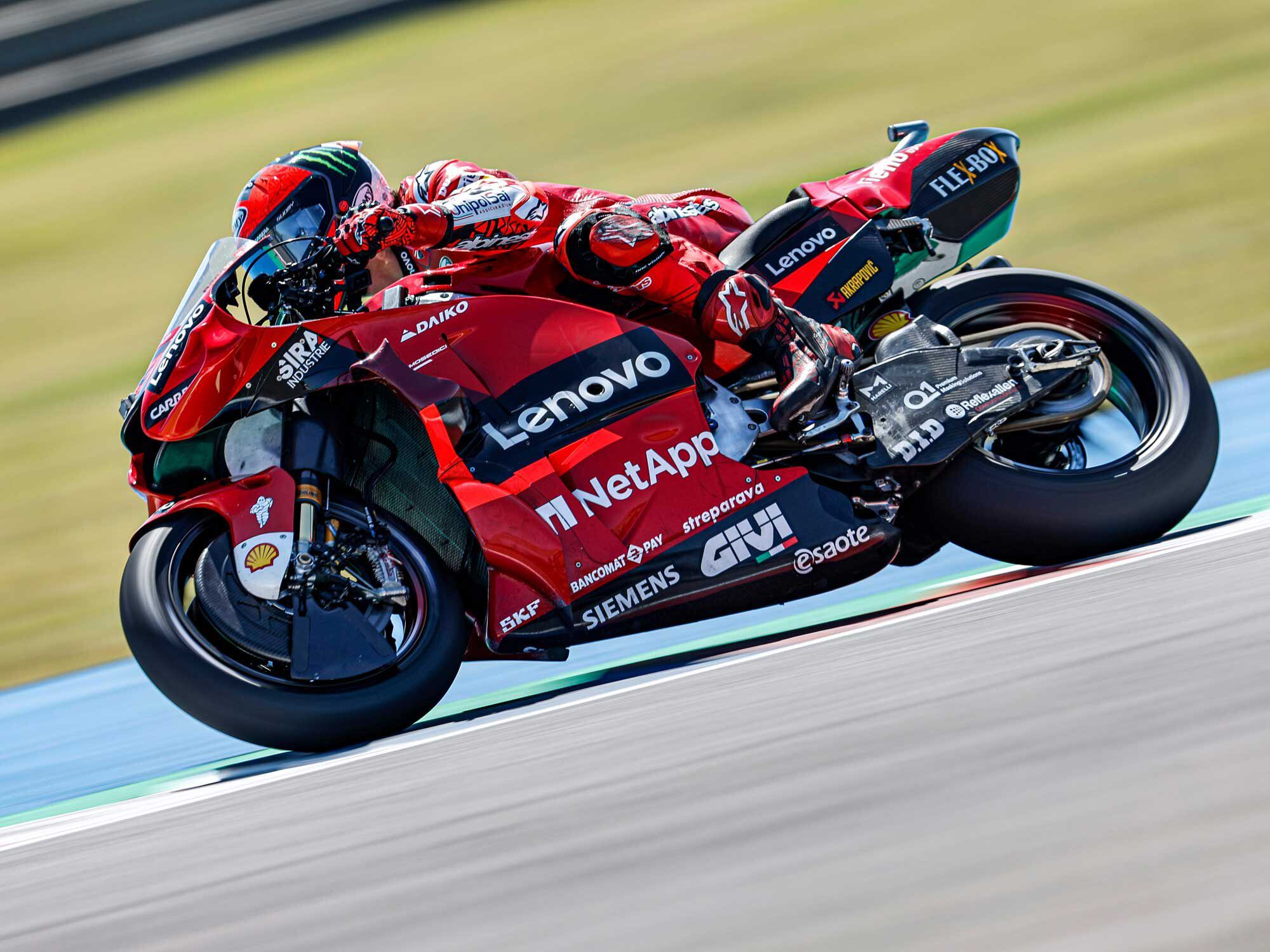[ad_1]

Ask Kevin Cameron (Cycle World/)After a lot whining from producers who should not Ducati, it appears MotoGP will ban entrance variable-ride-height gadgets for 2023. Such gadgets enhance acceleration/braking potential by decreasing center-of-mass top (because of this drag bikes are constructed as little as they’re). The choice is a response to the predictable objections—it’s too costly (which can imply “We can’t get our system working as well as the other teams have”) and it’s harmful (guidelines require it to be rider-operated, however the riders already produce other urgent issues to take care of).

Variable-ride-height gadgets decrease the middle of gravity for higher acceleration and braking. (Ducati/)A Grand Old Idea
At the very daybreak of mechanically powered autos, the English engineer George Stephenson had a associated thought, and he made it work greater than 200 years in the past. Because they lacked springs to soak up shocks, early locomotives had been breaking each their very own buildings and their rails, however together with such steel springs must await the supply of higher, extra crack-resistant supplies. Stephenson’s various was to assist his locos by boiler stress, appearing on pistons in close-fitting cylinders. The system appears to have labored pretty properly, because it continued into the early 1820s. As the engine raised steam earlier than a run, boiler stress would rise, and so would the locomotive.
Now let’s check out the Wikipedia entry on hydropneumatic suspension. A quote: “During World War II Paul Magès…secretly develops the concept of an oil and air suspension to combine a new level of softness…and self-leveling.”
Sounds so much like variable trip top to me! And designed 78 years in the past with out computer systems, crowdfunding, or dynamic finite factor evaluation. Magès’ employer, French automaker Citroën, adopted his system for its DS vehicles in 1955. Height-adjustable and self-leveling suspension methods have been supplied by quite a few different automakers.
If you’d wish to examine Stephenson’s thought, see web page 36 of Anthony Burton’s 2017 e book, The Locomotive Pioneers.
[ad_2]
Subscribe to our weekly newsletter below and never miss the latest product or an exclusive offer.


